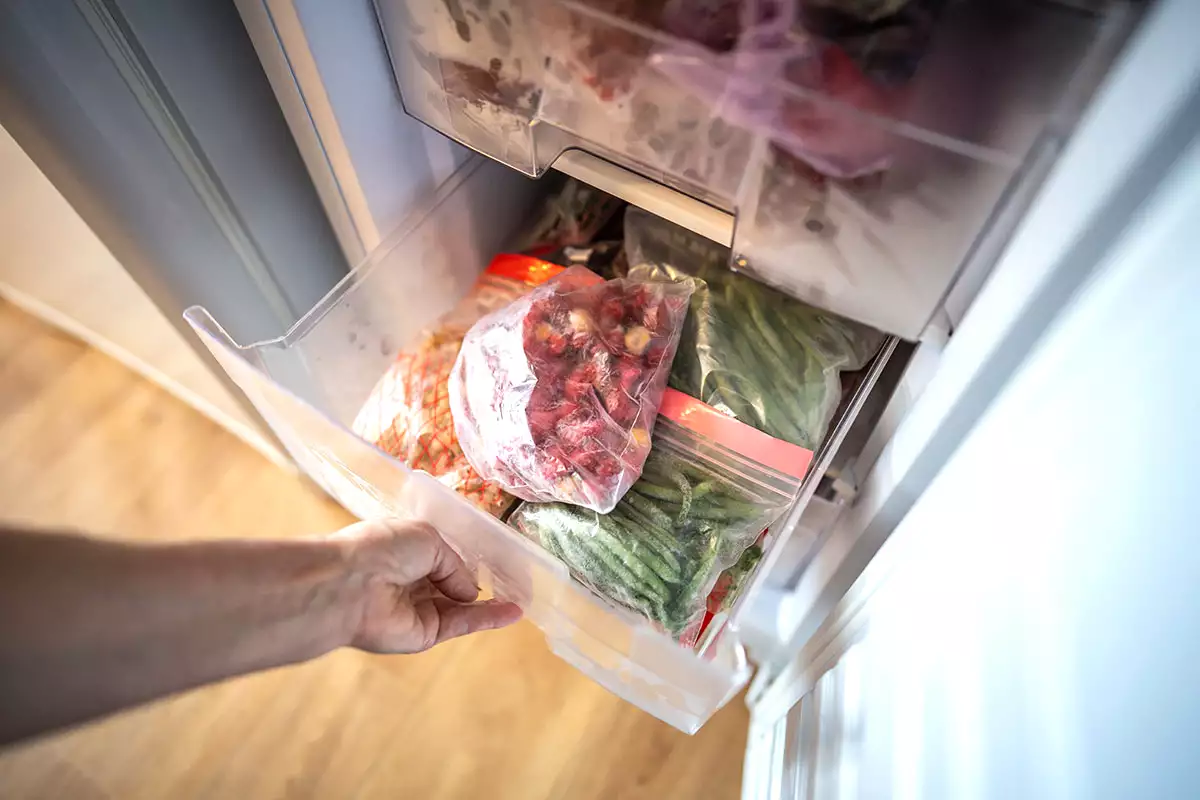Put aluminum foil in the freezer: the little-known trick that reduces energy consumption

Is your freezer silently costing you a fortune in energy bills? A surprising household staple may hold the key to combating frost buildup and extending your appliance's lifespan. Discover how a simple roll of aluminum foil could revolutionize your freezer maintenance routine.
Frost creeping across your freezer is quietly inflating your energy bill and shortening the appliance’s life. A simple fix is in the kitchen drawer: aluminum foil. Line the inner walls to trap humidity, curb frost and help the motor work less. Back it up with regular defrosting and a quick check of the door seals, and you get a colder, cleaner freezer that costs less to run.
Why frost buildup is a problem
Frost isn’t just a cosmetic issue. It’s a layer of ice that acts like a blanket, forcing your freezer to work harder to keep food cold. That extra effort means higher electricity use and more strain on the compressor. Over time, the appliance cycles more often, parts wear faster, and the unit’s lifespan can shrink.
There’s also a food angle. Heavy frost often signals temperature swings or excess humidity. When that happens, food can partially thaw at the surface and refreeze, which compromises texture and raises the risk of bacterial growth during handling. If drawers don’t close fully because of ice, cold air escapes, and the problem snowballs. The end result: a freezer that’s colder in some spots, warmer in others, and far less efficient than it should be.
Using aluminum foil to prevent frost
Here’s a simple hack: line the interior walls with aluminum foil. The foil acts as a moisture barrier, reducing the humidity that turns into frost. It’s cheap, quick, and reversible, and it helps keep ice from bonding stubbornly to plastic liners.
- Defrost and clean the freezer, then dry it completely.
- Cut foil sheets to fit panels and flat surfaces. Don’t cover vents.
- Smooth the foil against the walls. Use small strips of cold-rated tape if needed.
- Replace the foil when it tears, wrinkles badly, or collects residue.
Equally important: check the door seals. A weak gasket lets humid room air sneak in, creating frost no matter what you do. Perform the paper test—close a sheet in the door and tug. If it slides out easily, the seal may need replacing. Also, if your manual warns against liners or adhesives, skip the foil and focus on sealing and defrosting.
Other freezer maintenance tips
- Defrost regularly. Don’t let ice exceed 3–5 millimeters; it compounds quickly.
- Clean interior surfaces with mild soapy water, then dry thoroughly.
- Set the temperature to -18 °C for food safety and efficiency.
- Load smart: keep it reasonably full for thermal stability, but don’t block airflow.
- Inspect gaskets monthly. Use the paper test and look for cracks or grime.
- Vacuum condenser coils (back or bottom) every few months to maintain cooling performance.
These basics stop frost at the source and cut unnecessary energy waste.
Benefits of small changes in appliance care
Little adjustments add up. A frost-free interior keeps cold air moving, reduces compressor run-time, and helps your freezer hit its setpoint faster. That can translate into lower energy consumption and fewer repair calls. Foil costs almost nothing, yet it can make defrosting easier and less frequent, extending the useful life of your appliance.
Build these habits into your routine. Wipe the gasket, check the temperature, and refresh foil panels when you rotate food. Simple, low-cost tweaks today prevent larger, pricier problems tomorrow.
Explore more household tips
If this trick helped, keep going. Look for guides on setting ideal fridge temperatures, safe thawing methods, and smarter food storage. You’ll find practical advice on energy-saving routines, appliance maintenance schedules, and basic food safety that fits real life. Small steps, done consistently, make your kitchen run smoother—and cheaper—year-round.
 Vincent Sabourdy
Vincent SabourdyI make the best crêpes on the street.
I love accessible recipes, practical advice, and culinary news.
My goal: to offer the best possible culinary website to make cooking a pleasant and shared experience.
Comments